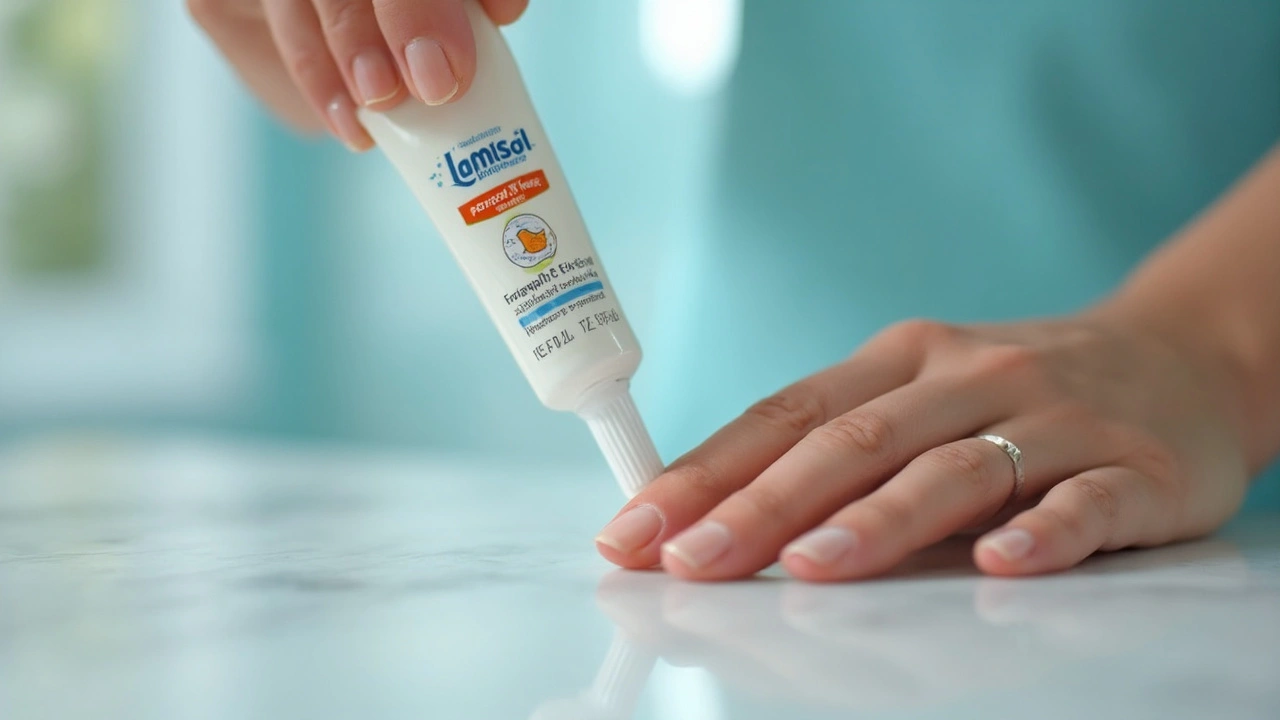Lamisil: How This Antifungal Can Help You Fight Fungal Infections
If you’ve been dealing with stubborn fungal infections like athlete’s foot, ringworm, or nail fungus, you might have heard about Lamisil. It’s one of the go-to options for getting rid of these infections effectively. But what exactly is Lamisil, and how does it work? Let’s break it down in simple terms so you can understand how this medicine might fit into your treatment plan.
What Is Lamisil and How Does It Work?
Lamisil is the brand name for terbinafine, an antifungal medication that targets fungal infections by stopping the fungus from growing. It’s commonly used to treat skin infections like athlete’s foot and jock itch, as well as fungal infections in the nails, which are tougher to clear up. Because fungi rely on certain enzymes to build their cell walls, terbinafine attacks those enzymes, weakening the fungi and eventually killing them.
You can find Lamisil in different forms: creams, sprays, gels, and oral tablets. The topical versions are great for skin infections, while the tablets are usually prescribed for more stubborn or widespread infections, like nail fungus, because the medicine works from inside your body.
What to Expect When Using Lamisil
Using Lamisil doesn’t usually require a complicated routine, but it’s important to follow your doctor’s advice for the best results. For topical treatments, apply the cream or gel exactly where the infection is and continue for the full time your healthcare provider recommends—even if the infection seems gone quickly. Fungal infections are sneaky and can come back if not fully treated.
When taking oral Lamisil tablets, treatment often lasts several weeks, especially for nail infections, since nails grow slowly and it takes time for new healthy nail to replace the infected part. You might hear about liver risks linked to terbinafine tablets, so doctors often do blood tests before and during treatment to keep things safe. Watch for symptoms like fatigue, dark urine, or jaundice and report these right away.
Some people may experience mild side effects like stomach upset, headache, or rash. These usually go away quickly, but always check with your healthcare provider if something feels off.
Remember, Lamisil is not for everyone. If you’re pregnant, breastfeeding, or have certain health conditions, your doctor might suggest different treatments. Don’t hesitate to ask questions or share concerns with your healthcare provider to get the safest care.
By understanding how Lamisil works and what to expect, you’ll be better prepared to tackle those unwanted fungal infections with confidence and avoid common pitfalls. If you think Lamisil might be right for you, reach out to a healthcare professional and get started on the path to clearer skin and healthier nails.
Lamisil: Everything You Need to Know About Treating Fungal Infections Safely
By Lindsey Smith On 8 Jun, 2025 Comments (11)

Ever wondered if there's an easy fix for stubborn fungus on your skin or nails? Lamisil, a popular antifungal medication, could be the answer. This article breaks down how Lamisil works, what it's good for, and tips for using it safely. Find out what you should watch out for and how to get the best results with this well-known treatment. Real tips, real info, zero fluff.
View More




